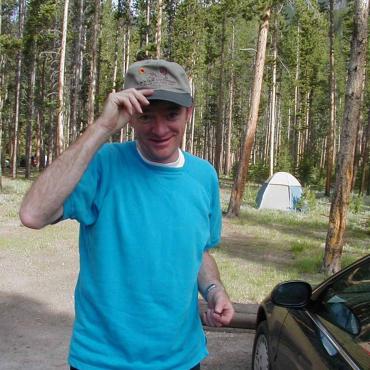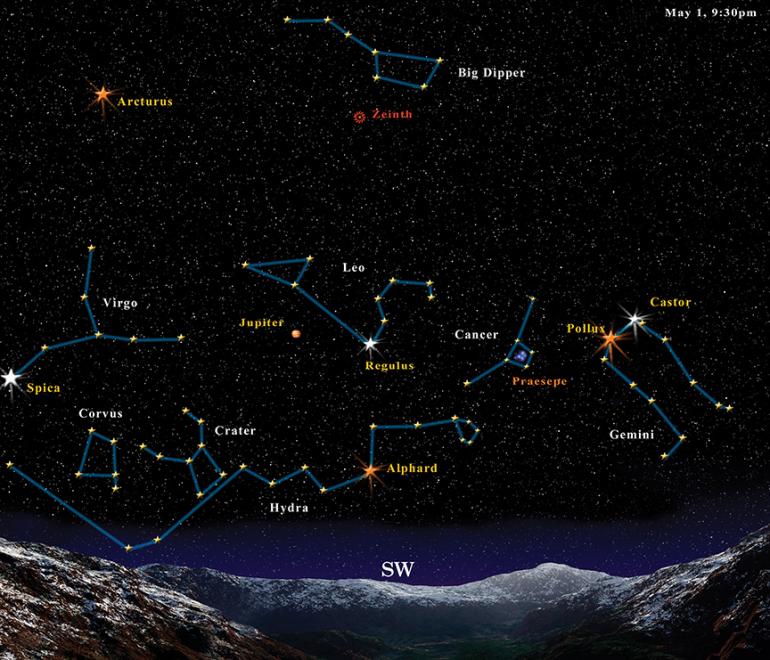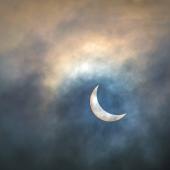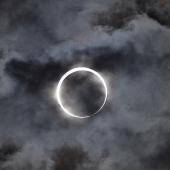Stable in the Sky
Spring constellations.
In the vast open spaces of the Old West, almost any isolated homestead you came upon would have had horses for transportation and a stable in which to house them. In the vast open spaces of the night sky, we can find a stable as well, but it takes some looking.
On spring evenings, go outside around nine or ten in the evening and look high in the north for the Big Dipper, swinging nearly overhead. Then trace a line southward from the Pointers (the two stars of the Dipper bowl farthest from the handle), and high in the southern sky you’ll come to the backward question mark and triangle of stars that form the body of Leo the Lion. The backward question mark forms the front of the lion, the loop outlining his mane and fierce eye. Then look to the right at what Leo is looking at. Between the lion and the bright stars Castor and Pollux sits Gemini, in a space devoid of any bright stars, so search carefully. If the night is dark and clear, you’ll see a faint, hazy patch of light in a box of four dim stars. That’s the heart of the stable, also known as Cancer the Crab.
Take a look with binoculars, and the hazy patch turns into a lovely cluster of stars. The cluster is called the Praesepe—Latin for manger—and the stable connection suddenly becomes clearer.
The Greeks, who sometimes saw a crab here, also saw the box of four stars and the fuzzy patch within as a feed trough filled with hay. The two brighter stars of the box on the left side were seen as two donkeys eating away. Even today, the two stars are known by their Latin names: Asellus Borealis and Asellus Australis—the Northern and Southern Asses.
The story goes that Dionysus, the Greek god of wine, and his mentor Silenus rode these donkeys to the great war between the gods and the giants that followed the great war between the gods and the Titans. The unfamiliar braying of the beasts so dismayed the giants that they ran away. As their reward, Dionysus placed the animals in the sky with a full larder, and they chomp away still today in their stable in the sky.
Turn the manger area into a shelled body, and use stars above and below to mark claws snapping at the nose of Leo, and you have Cancer the Crab—who suffered an unfortunate fate compared to the donkeys. In Greek lore, the goddess Hera sent him out to torment Hercules when the brawny hero was fighting the Lernian Hydra, a serpentine monster of many heads. When Cancer snapped at Hercules’ ankle, the annoyed hero stamped him into a soft-shelled entrée, and that was that. Hera still gave the crab an “A” for effort and placed it in the sky.
The ancient Chaldeans also fancied a crab in these stars. The Babylonians imagined a tortoise, and the Egyptians a scarab beetle, but crustaceans were popular here: European astronomers of the Middle Ages drew lobsters and crayfish on their star maps in addition to crabs. The Chinese took a darker turn and called the four-star box the Ghost Wagon, making the Praesepe a wagonload of spirits.
To Galileo in 1609, the ghostly Praesepe was a revelation when his new-fangled telescope showed it to be a cluster of individual stars—proving that the sky harbored more stars than could be seen by the eye alone. And a simple pair of binoculars can show you what Galileo saw—better than he saw it through his crude instrument.
Cancer the Crab is a good constellation for spring, as it rides high at the time of year that the bees begin their pollination tasks for the growing season, flitting among the spring flowers. And in fact, an alternative name for Cancer’s star cluster is the Beehive cluster—using binoculars, one can imagine a swarm of bees buzzing in their hive.
Bees, hay, ghosts, the innards of a crab, or sprinkled stars, the cluster is a lovely sight on spring evenings with a little optical aid. So grab your binos and your imagination, and have fun exploring the stable in the sky!
Jim Manning, formerly the executive director of the Astronomical Society of the Pacific in San Francisco, lived outside Bozeman for many years and has returned to live here again.













